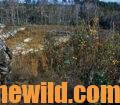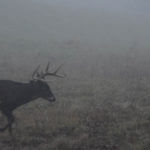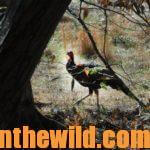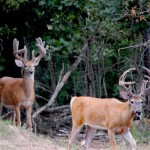Editor’s Note: “By December 1st each year, deer have been put on alert that the hunters are in the woods,” says Keith Guyse, formerly assistant chief of the Wildlife Section for Alabama’s Department of Conservation and Natural Resources. “They’ve smelled human odor and heard four-wheelers running through the woods and guns popping. The deer are holding up during daylight hours and feeding primarily at night. I believe that the lull from December until the rut starts in the Deep South is nothing more than the deer’s response to hunting pressure.”
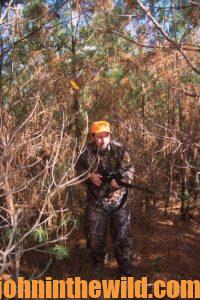 If you’ve hunted deer for very long, you know that hunters have taught the deer how to dodge hunters. Older deer learn quicker than younger deer to avoid the places where hunters hunt. Some of the best bucks on your property know where you’ll hunt even before you do. Here are some specific techniques to take bucks to help you overcome the difficulties associated with hunting during the lull.
If you’ve hunted deer for very long, you know that hunters have taught the deer how to dodge hunters. Older deer learn quicker than younger deer to avoid the places where hunters hunt. Some of the best bucks on your property know where you’ll hunt even before you do. Here are some specific techniques to take bucks to help you overcome the difficulties associated with hunting during the lull.
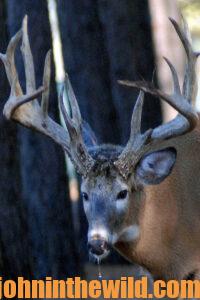 * How to Hunt Public Lands: “If you understand that hunting pressure is the reason for the lull in taking deer, you can use this hunting pressure to your advantage,” Guyse says. “On many state Wildlife Management Areas (WMAs), some of the better hunters will go about 1/2- to 1-mile into the woods well before daylight and get into their tree stands. Then when the other hunters come into the woods, that hunter movement drives the deer from the front half of the woods to the back half of the woods where they wait.”
* How to Hunt Public Lands: “If you understand that hunting pressure is the reason for the lull in taking deer, you can use this hunting pressure to your advantage,” Guyse says. “On many state Wildlife Management Areas (WMAs), some of the better hunters will go about 1/2- to 1-mile into the woods well before daylight and get into their tree stands. Then when the other hunters come into the woods, that hunter movement drives the deer from the front half of the woods to the back half of the woods where they wait.”
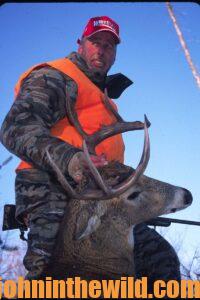 * Why Hunt Green Fields: Now’s the time of year to go to the green fields that hunters in your area hunt the least, or don’t hunt at all, to increase your odds for bagging a buck. However, you may have more success by going to a green field where someone has spotted a big buck and find the trail he’s used to come into the green field. Take a portable climbing tree stand with you, and follow that trail for 200 to 300 yards back into the woods. Begin to hunt there. The bucks often will come down this trail, stop and feed or browse before they move into the green field. Only go into the green field after dark.
* Why Hunt Green Fields: Now’s the time of year to go to the green fields that hunters in your area hunt the least, or don’t hunt at all, to increase your odds for bagging a buck. However, you may have more success by going to a green field where someone has spotted a big buck and find the trail he’s used to come into the green field. Take a portable climbing tree stand with you, and follow that trail for 200 to 300 yards back into the woods. Begin to hunt there. The bucks often will come down this trail, stop and feed or browse before they move into the green field. Only go into the green field after dark.
* Why Hunt Funnels: According to Dr. Larry Marchinton, retired wildlife biologist from the University of Georgia in Athens, Georgia, and one of the nation’s leading deer researchers, “One of the very best places to hunt deer at any time of the year is at bottlenecks and natural funnels where the terrain necks down. The deer usually will have to pass through a small woodlot to get to their feeding or bedding areas.” The type of funnel Marchinton describes may be a field that corners into a stream or a creek and a small neck of woods from the point of the field to the edge of the creek. Too, you’ll often find a funnel where a small strip of woods along a ditch divides a clear-cut and a pine plantation. “These are natural, thick-cover corridors that the deer use to travel from one type of terrain to another,” Marchinton explains. “Deer like to move along the edges of terrain breaks, and a funnel is created when two edges come really close together. 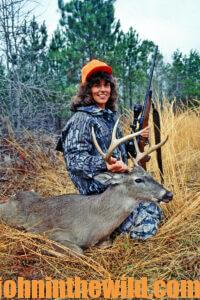 Generally you’ll see the most deer activity, regardless of the time of the year, at a place like this.”
Generally you’ll see the most deer activity, regardless of the time of the year, at a place like this.”
* How to Conduct Small Drives: Too, you may locate big bucks holding during the lull in small patches of thick cover. These small, overlooked spots like a briar patch behind your clubhouse, a little thicket on the edge of the road that leads to your hunting camp, a thick-cover region by a campground or a little patch of cover out in the middle of the field can hold big bucks. Often you can take these bucks best by either putting on a one- or a two-man drive. To make a small drive in thick cover, put the stander on the downwind side of the cover, and send the driver to the upwind side of the thicket. Have the driver walk slowly and quietly from one side of cover to the other as he moves forward. He depends on his human odor to push the deer out of the cover and into a spot where the stander can get off a shot. The less noise the driver makes and the 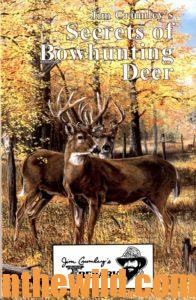 slower he moves, the better the chances he and the stander will have to take a shot at a walking, not a running, deer. Hunters who use this tactic may make from 10 to 20 drives in a day, with each drive not covering more than 1/2- to 2 acres.
slower he moves, the better the chances he and the stander will have to take a shot at a walking, not a running, deer. Hunters who use this tactic may make from 10 to 20 drives in a day, with each drive not covering more than 1/2- to 2 acres.
 To learn more about hunting for deer, check out John E. Phillips’ bowhunting book, available in Kindle and print and soon to be available in Audible, “Jim Crumley’s Secrets of Bowhunting Deer” at http://amzn.to/XYTCEY. You may have to copy and paste these links into your browser. (When you click on the books, notice on the left where Amazon says you can read 10% of the book for free). To see more of John’s deer-hunting books, visit http://www.amazon.com/author/johnephillips. John and Denise Phillips’ new book, “The Recipes You Can’t Live Without,” that’s full of delicious, time-tested recipes for cooking wild game and fish and also ideas for breakfasts at your hunting club just was published in print this past week. Go to https://www.amazon.com/dp/B09MYTMSMH?ref_=pe_3052080_397514860 to learn more.
To learn more about hunting for deer, check out John E. Phillips’ bowhunting book, available in Kindle and print and soon to be available in Audible, “Jim Crumley’s Secrets of Bowhunting Deer” at http://amzn.to/XYTCEY. You may have to copy and paste these links into your browser. (When you click on the books, notice on the left where Amazon says you can read 10% of the book for free). To see more of John’s deer-hunting books, visit http://www.amazon.com/author/johnephillips. John and Denise Phillips’ new book, “The Recipes You Can’t Live Without,” that’s full of delicious, time-tested recipes for cooking wild game and fish and also ideas for breakfasts at your hunting club just was published in print this past week. Go to https://www.amazon.com/dp/B09MYTMSMH?ref_=pe_3052080_397514860 to learn more.

